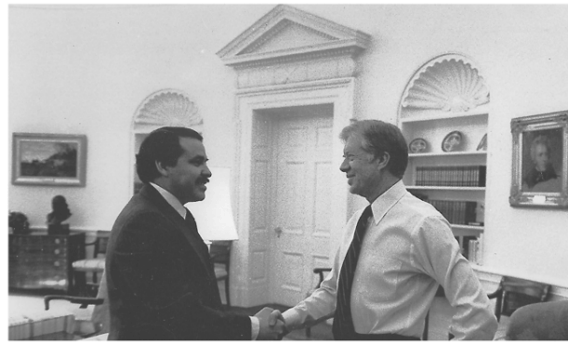Dana Stevens is right: Argo, Ben Affleck’s fictionalized account of a CIA plot to rescue six Americans during the Iranian hostage crisis of 1981, is proof that the former heartthrob is evolving into an impressive director. His acting skills have not kept pace. Affleck biggest misstep with Argo was casting himself as the film’s star: Antonio Mendez, the CIA specialist who concocted the plot to infiltrate Iran and extract the hostages under the cover of a fake Hollywood film crew. Affleck’s performance is 90 percent beard, but his facial hair can’t mask the fact that he’s turned an unsung Latino American hero into just another white boy.
Argo takes liberties with the historical record, but Affleck at least strives to establish some aesthetic accuracy. As the end credits roll, he offers side-by-side comparisons of the film’s characters and their real-life counterparts. It’s a fun exercise—many, like John Goodman and legendary Hollywood makeup artist John Chambers, are the spitting image of one another. Tellingly, Affleck leaves himself and Mendez out.
It’s well-established that the overrepresentation of white dudes in film directing means more movies about white dudes that reflect the values and interests of white dudes. But the problem becomes particularly obvious when these directors cast themselves as their own leads. Affleck’s is an egregious example, but he’s in good company: Charlie Chaplin, Woody Allen, Clint Eastwood, George Clooney, and Ben Stiller all paved the way.
In rare cases, these directors have used their power to highlight alternate perspectives. Clint Eastwood regularly leverages his position as an old white guy to explore how other old white guys might interact with people who aren’t old white guys (female boxers, Asian immigrants, their own daughters). And sometimes, these directors are actually correcting imbalances in Hollywood storytelling. There aren’t enough good roles for elderly actors, for example.
But you know who there really aren’t enough good roles for? Non-white, non-dude actors. Male actors are still valued higher than female ones. They get better roles and draw higher salaries (Taylor Lautner made more than Kristen Stewart in 2010). Historically, moving behind the camera has been easier for men than women. Meanwhile, black and Latino audiences buy movie tickets at a higher rate than white viewers, but appear less frequently on screen and are rarely stationed behind the camera. And characters of color are still routinely whitewashed, from Argo to the Hunger Games.
The white guy actor/director club is integrating slowly: Vera Farmiga directed herself Higher Ground. Brit Marling wrote both of her starring roles, in Another Earth and Sound of My Voice. Natalie Portman has launched a production company to develop female-driven comedies, and Rashida Jones recently wrote her first film, which she refused to sell to a studio that hoped to cast a more commercially proven leading lady. These women are leveraging their clout in front of the camera to correct a real deficit of female filmmakers. But white dudes like Affleck might consider not always putting themselves at the center of the frame—not because it would make them better people, but because it will make for more compelling films. As Stevens wrote in her review, “An older, less callow actor—George Clooney, Brad Pitt, or (to get crazy and cast an actual Latino) Benicio Del Toro—might have brought more texture and darkness to the role of this quiet, driven man.” The real Tony Mendez put it diplomatically at Argo’s D.C. premiere this month: “Ben’s a good-looking guy, but he’s not quite good-looking enough to play me.”
Correction, Oct. 16, 2012: This post originally stated that black and Latino audiences buy more movie tickets than white viewers. While they buy tickets at a higher rate than white viewers, they do not buy more overall.
